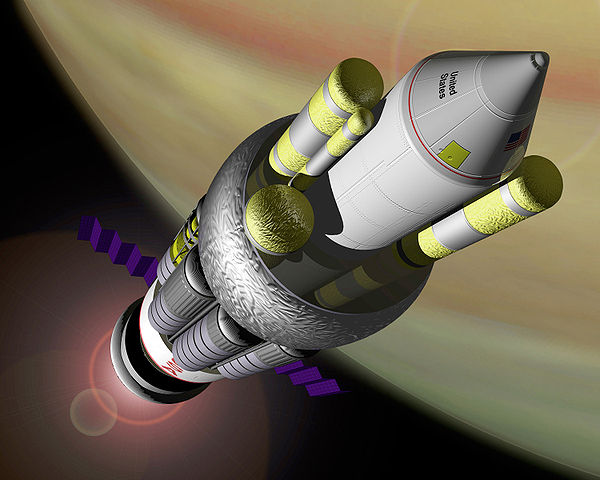
NASA studies an interstellar travel to Alpha Centauri
– News of January 16, 2018 –
Almost every year, new space probes point to different planets and celestial bodies to tell us more about what is happening beyond the Earth. Unfortunately, there is little chance that we will be able to witness an interstellar travel during our lifetime. But that does not mean that we should not start thinking about it. This is the thinking that pushes NASA to consider a mission towards Alpha Centauri, for 2069.
Alpha Centauri is a system composed of three stars and at least some planets. It is the planetary system closest to our sun. When we talk about interstellar travel, at 4.35 light-years away, it would take nearly 70 thousand years to reach this system at the speed of today’s space probes. To go faster, it would be necessary to be able to design a space probe capable of traveling at least 10% of the speed of light. The interstellar travel could then last a little over 40 years, to which we must add another four years for the information to make the return travel. This is very long but it leaves a chance for someone young at the start of the mission to see its outcome.
If NASA leaves more than 50 years before the start of the mission, it is because traveling at more than 10% of the speed of light is a big challenge. The US space agency is not the only one to imagine a mission of this type. The Breakthrough Starshot initiative wants to send micro-probes to Proxima Centauri with high-power lasers. This is a solution that NASA is also studying, but the US space agency does not rule out the use of nuclear propulsion or antimatter propulsion. The mission would aim to look for traces of life.
NASA does not engage much. The US space administration is already having trouble writing a program for the next ten years, so 2069 seems like an eternity. This is good news, however, that interstellar travel projects continue to emerge. Even if the teams working on this project produce only theoretical results, it is possible to make progress thanks to them. Perhaps in the next ten or twenty years, observations of nearby exoplanets will give a real interest to missions of this type.
Image by NASA (http://mix.msfc.nasa.gov/abstracts.php?p=704) [Public Domain], via Wikimedia Commons









